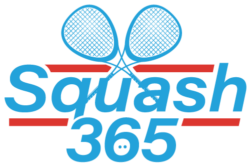That persistent ache from your elbow to your wrist may be due to swelling. But you might be surprised to learn it’s called tennis elbow if you don’t play tennis. But what exactly is tennis elbow, and what can you do to treat it and prevent a reoccurrence?
What is Tennis Elbow?
Tennis elbow is the everyday name for inflammation of the tendons attached to the elbows. The medical term is lateral epicondylitis.Tendons are fibrous cartilage tissue that attaches muscles to bones. When tendons are overworked, they can inflame and suffer micro-tears.
Causes of Tennis Elbow
Lateral epicondylitis received its nickname, tennis elbow, after the medical community noticed the condition in tennis players. Repeatedly hitting a backhand shot in practice and competition without proper form makes tennis players especially susceptible to the condition. But that doesn’t mean tennis players are the only ones who suffer from inflamed tendons around the elbow. Any repetitive motion that places undue stress on the forearm muscles can cause the condition.
Likewise, injury to the arm can result in tennis elbow. For example, experiencing a car accident or a fall can also cause inflammation.
There are also ordinary, day-to-day activities that can trigger tennis elbow. Keep in mind that performing a motion once or infrequently isn’t likely to create a problem. It’s an intensive, repetitive motion that can lead to trouble.
Some everyday activities that can cause tennis elbow include yard work, such as raking and gardening. Carpentry work that involves constant hammering also taxes the forearm muscles. Similarly, consistent work as a painter can also cause a flare-up. In construction jobs repetitive motion injuries are common and can cause carpal tunnel syndrome, shoulder impingement syndrome and tennis elbow.
You can get tennis elbow from an office job, too. Hour after hour of typing can prove physically stressful.
Even non-sports-related recreational activities can cause tennis elbow if overdone. These include playing musical instruments.
Symptoms of Tennis Elbow
The primary symptom of tennis elbow is persistent elbow pain. However, the pain may not stay in the elbow region but travel down the forearm to the wrist.
The radiating pain can cause a weak or painful grip. The intensity may increase if you bend your wrist backward.
How is Tennis Elbow Diagnosed?
Your doctor should be able to diagnose tennis elbow fairly quickly. An examination of your arm will readily reveal soreness and tenderness and a limited range of comfortable movement.
Your medical history will play a role, too. If you’ve suffered from tennis elbow in the past, you’re likely to have reaggravated the tendons.
If necessary, the doctor may suggest an imaging test. But this is usually for cases where the doctor suspects more than the usual reasons for your pain.
Treatment of Tennis Elbow
For starters, your doctor will recommend taking a break from the activity causing your tennis elbow. Next, the doctor will probably advise using an ice pack to reduce the pain and inflammation.
In some severe cases, you might be given the option of receiving a steroid shot. There are also prescription and over-the-counter medications that can help with pain and swelling.
In rare cases, surgery may be necessary. But surgery is usually advised only after the symptoms persist for months despite treatment.
Prevention of Tennis Elbow
To prevent the reoccurrence of tennis elbow, you may have to relearn certain activities. For example, you may have to talk to an ergonomic expert to find the proper arm posture for typing, hammering, or gardening.
Meanwhile, once the inflammation goes down, you should begin exercising your forearm. You want to make the forearm more elastic as well as stronger.
